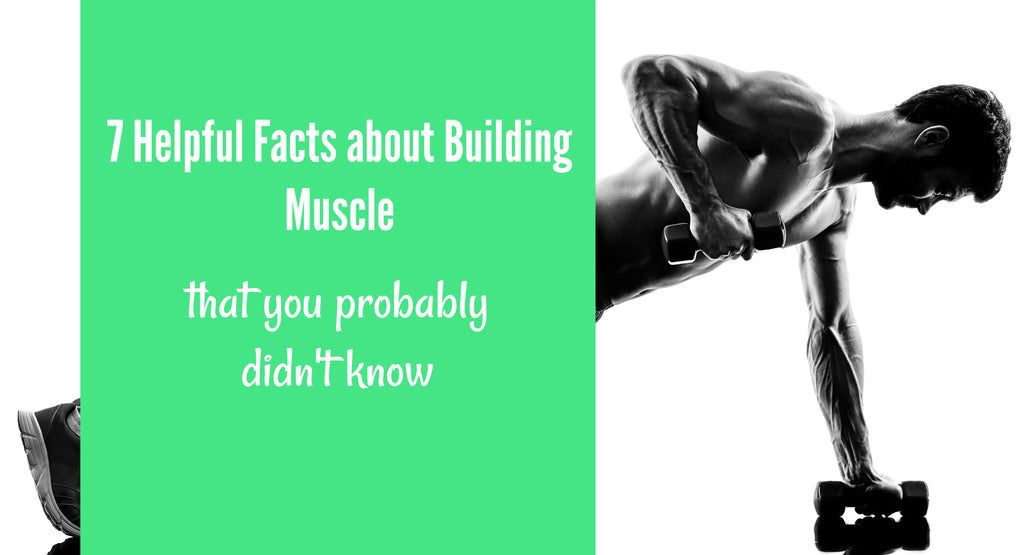If you’re an athlete, building muscle is most likely one of your top priorities. At RIPT, the top priority is keeping your hands healthy, or healing them quickly when you do get a rip, so that you can stay in the gym and continue to work toward your goals. Of course, another major factor that helps you reach your fitness goals is strength, AKA building muscle. From CrossFit to gymnastics, and across all sports, strength is a common denominator for success. Building muscle doesn’t happen overnight, though, and it’s important to arm yourself with knowledge that will help you train smarter. Are you doing everything you can to help yourself? Here are some important facts that will help you understand more about your muscles and how you can reach your strength training goals safely and most efficiently.
1. You should be getting 1.2-1.7 grams of protein per kilogram or .5-.8 grams of protein per pound of body weight per day if you want to build muscle.
The Academy of Nutrition and Dietetics recommends that the average person consume .8 grams of protein per kilogram or .35 grams of protein per pound of body weight. However, if you want to build muscle mass with physical activity, then your guidelines should be adjusted. You essentially need to consume more protein than you are breaking down. Therefore, you should up the recommended daily intake. This means a 150-pound person (who is working out in order to build muscle) would need between 75 and 120 grams of protein per day.

2. Just because you are sore, it doesn’t mean you are building muscle.
You’ve probably heard people tell you that being sore after a workout is good -- that this is how you know you are building muscle. You might even be disappointed if you find yourself not feeling sore after a tough workout. The truth is, soreness doesn’t always translate to more muscle growth. In fact, research has shown that soreness is not an exact formula.
So what does it mean when you feel sore? Feeling sore is the result of muscle damage, however there is very little evidence to prove that muscle damage is necessary for muscle growth to take place. While muscle damage might speed up muscle growth, again the correlation between the two cannot be directly measured. There are a couple of factors that lead to soreness. Straining your body in a way it is not used to will cause soreness. There are also certain exercises that are simply more likely to cause soreness (a deadlift versus a lateral raise, for example). And finally, research suggests even your individual genes can affect the severity at which muscle damage leads to soreness in your body.
So what about training when you feel sore? Studies in both the Journal of Strength and Conditioning Research and the Journal of Applied Physiology found no connection between training sore muscles and a lack of muscle growth, nor is there evidence to suggest working out when you are sore exacerbates muscle damage. In other words, you can’t measure muscle growth based on how sore you are after a day in the gym. It’s good to keep your body guessing (more about that in #6), which will most likely lead to soreness, but it’s important to note that you won’t necessarily “feel” muscle growth through pain the next day.
3. Major muscle groups should be trained at least 2x/week for muscle gain.
How many times a week should you work out each muscle group for maximum growth? A study published by the NCBI (National Center for Biotechnology Information) looked at resistance training programs to determine what role frequency played on muscle growth. It was concluded that training muscle groups twice a week produced better results than only training once a week. There wasn’t, however, enough evidence to conclude that training three times a week versus two had a better outcome.

4. Lifting heavy isn’t the key to gaining muscle.
The popular belief that the heavier weights you lift, the more muscle you are building has been slowly debunked in recent years. A study conducted by researchers from McMaster University and published in the Journal of Applied Physiology looked at two groups of men, each training for a total of 12 weeks. One group lifted heavier weights (up to 90% of max capacity) for less reps (8-12), while the other completed more reps (20-25) with lighter weights (50% max capacity). At the end of the trial, gains in muscle mass and muscle fibre size were found to be almost exactly the same.
So if you can’t do a heavy weight workout one day, you shouldn’t skip the gym altogether. Doubling up the reps on lighter weights should give you the same muscle building effect. In a similar way, if certain exercises with heavy weights are causing pain, lower your number of reps. Fatigue is the key factor, according to the lead researcher on the study, whether that be achieved through heavy weights or a high number of reps.
5. To reduce your risk of injury and maximize your gains, work on a push/pull training program instead of focusing on body parts.
Training programs focused on specific body parts used to be very popular. You’d work your chest and arms one day, legs another, and abs another. However, in recent years, studies have found that the safest way to build muscles in your entire body while also minimizing stress on the joints is to do what’s known as a push/pull program. The major muscle groups in the body can be divided into push versus pull. The push muscles are ones in which the muscle tissue contracts when a weight is pushed away from the body. The push muscle groups include the calves, deltoids, gluteals, pectorals, quadriceps, and triceps. For example, when you do a push-up, you are mainly working your pectoral muscles, triceps, and deltoids (with other ancillary benefits to other muscles). The pull muscles are ones in which the muscle tissue contracts as the weight is pulled toward the body. These include the abdominals, biceps, forearms, Latissimus Dorsi, hamstrings, obliques, and trapezius. When you do a pull-up, you are mainly working your biceps and lat muscles.
I attended a seminar led by Dr. Dave Tilley, and he emphasized the need to perform the same amount of push/pull exercises on each area of your body. So for every repetition of an upper-body horizontal pushing exercise you do during a given week, you should also do a repetition of an upper body horizontal pulling exercise. It’s important to balance both pushing and pulling exercises in order to prevent injuries.
6. Routine is the enemy.

You probably already know that varying your exercises is important, but you should also be varying your workout intensity. The idea is that to see muscle growth, you need to keep forcing your body to change. This means changing up your volume, intensity, and frequency -- while allowing for rest. It’s also important to note that one affects the other. If your volume increases significantly, your intensity will inevitably decrease. A helpful definition for intensity is a percentage of your 1-rep maximum, meaning the higher your intensity, the less reps you will be able to do. If you are using less weight (aka, less intensity), you will be able to perform more reps.
Finding a balance between these three variables can be a challenge, but keep in mind that rest is also key. If you aren’t properly resting between workouts, you won’t be able to change any of the three variables, and you won’t build muscle with a stagnant regimen. Enough rest will allow you to pick up your volume, intensity, or your frequency.
7. Ginger can Ease Muscle Pain
Ginger has long been used as a remedy for things like an upset stomach, but there is also research to support its ability to reduce muscle soreness. Researchers at The University of Georgia performed a study in which they had participants consume a ginger supplement for 11 days prior to a workout. The results, which were published in the Journal of Pain, showed that the supplement group saw 25% less “exercise-induced pain” 24 hours after the workout, as compared to the group who did not take the ginger.
If you’re trying to build muscle, you don’t want anything slowing you down or keeping you out of the gym. Muscle pain can slow you down, so consuming ginger and other foods that are said to have anti-inflammatory properties, like cacao, green tea, sweet potatoes, salmon, turmeric, manuka honey, tart cherries, and cottage cheese, are a great addition to your health and fitness program.
Eating a high-protein diet, balancing your workouts with recovery time, changing up your volume, intensity, and frequency, and focusing on a push/pull program will all help you build muscle and gain strength. Taking preventative measures to reduce muscle soreness and protect your body from injuries, like hand rips, is also important. So when you do get an injury like a hand rip, proper treatment will get you back to your workouts -- and strength building -- faster.


Leave a comment: